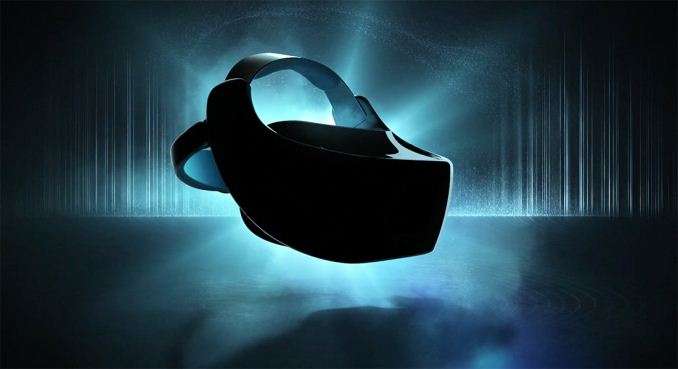HTC Announces New Standalone Vive VR Headset with Google Daydream Support
by Matt Humrick on May 17, 2017 3:00 PM EST
Today at Google I/O 2017, Google and HTC announced a new Daydream VR compatible Vive headset. This new device in the Vive family is a standalone unit that does not require a PC or a smartphone to power the experience and is completely wireless. HTC says that this will be one of the first standalone headsets to support Google’s Daydream platform, which implies other headsets are coming too.
HTC is not revealing much about its new Vive right now. The hardware configuration is unknown, but Qualcomm has been hinting at several standalone VR headsets coming this year that will be using its Snapdragon 835 SoC, which would seem to be a good fit for the Vive. Battery size was not specified either, but without the need to carry an entire smartphone in the headset it should be able to put that volume and weight savings towards a battery that’s larger than typically found in a 5.5-inch phone. It will support the new Daydream WorldSense motion tracking, though.
The standalone Vive will be available “later this year” for an unspecified price.










14 Comments
View All Comments
admnor - Friday, May 19, 2017 - link
That's a pretty big difference. It means all the phoney bits of the phone can be removed, and what's left can be optimized for VR instead of being general-purpose. For example, very-high-resolution screens are not optimal for phones because they kill battery life, but on a VR headset that's less of a concern. It also means OEMs can opt for two smaller screens instead of splitting a large one, which in turn can make rendering more straightforward with a separate GPU-per-screen, perhaps. We're far more likely to see a dedicated VR headset with a pair of 2160x2160 screens and a Tegra Xavier SoC than we are to see a phone being shipped with equivalent specs on the off-chance you want to bung it in a face-holster.And, finally, the various parts, including all the -ometers, can be spread out around the device, making cooling easier and improving the weight and balance.
Diji1 - Tuesday, May 23, 2017 - link
Incorrect, the SoC in this headset is designed specifically to power VR devices meaning the experience will be far betteredzieba - Thursday, May 18, 2017 - link
As of today at least, SteamVR tracking (rebrand for Lighthouse) requires all tracking data funnel through the SteamVR runtime. As that does not run on ARM phones (or any other platform that does not run steam) it is unlikely this HMD will use existing Lighthouse setups for position tracking, unless they also require you to have a nearby PC running to stream data back and forth with.Matt Humrick - Thursday, May 18, 2017 - link
The WorldSense motion tracking is built into the HMD. It does not require external sensors.